
a VR prototype
Core Idea: The relationship between humans and fear, both the primal fear and more modern fears
Medium: AR + VR
Outcome: 3 VR Sculptures, 1 playable VR prototype
Year: 2019
Time spent: 3 month (half for research, half for execution)
Across a span of 3 months, I studied AR & VR from the ground up. From answering ‘What is Reality?” to creating AR filters for Snapchat/Instagram
to using Unity - a game engine to build a playable prototype.
This project is the culmination of the short 3 months, ending in a rudimental VR prototype.
The course was divided into 3 sections, within each I studied 3 integral parts of AR/VR.
The Philosophical - the concept of VR
The Software and Tools - techniques and know-hows
The Storytelling and Interactivity - designing a VR experience
Chosen topic: fear.
It all started with a real-life incident of me leaving campus ground at midnight, after turning in my assignments.
I was almost robbed while cycling home from campus at midnight, while carrying all my belongings on my back.

The road leading up to campus - where it happened
My heart raced, my mind spiked with fear.
I managed to escape unscathed.
I had a moment of sudden inspiration.
I knew I had to use this story in some way.
Whilst still incubating this raw concept revolving around fears and our mortality, I dipped foot in many schools of thought. I went from end to end of a spectrum, a spectrum that said “absolutely abstract” on one end and “anybody can resonate with” on the other. From a handful of insightful feedback, I nailed down some of the core ideas that have found themselves as the foundation to my project.
One was that fear is subjective, therefore a personal, traumatic experience just seems like watching a movie rather than an relatable experience. Consequently this lead me to choose the path of abstract elements, based off of things that generally are not confusing to the public.
I brainstormed and sculpted in virtual space visual representations of basic fears.
Like fear of death, of failure or rejection, of change.
At the time, my work solely intended to exhibit these creations in an AR space.
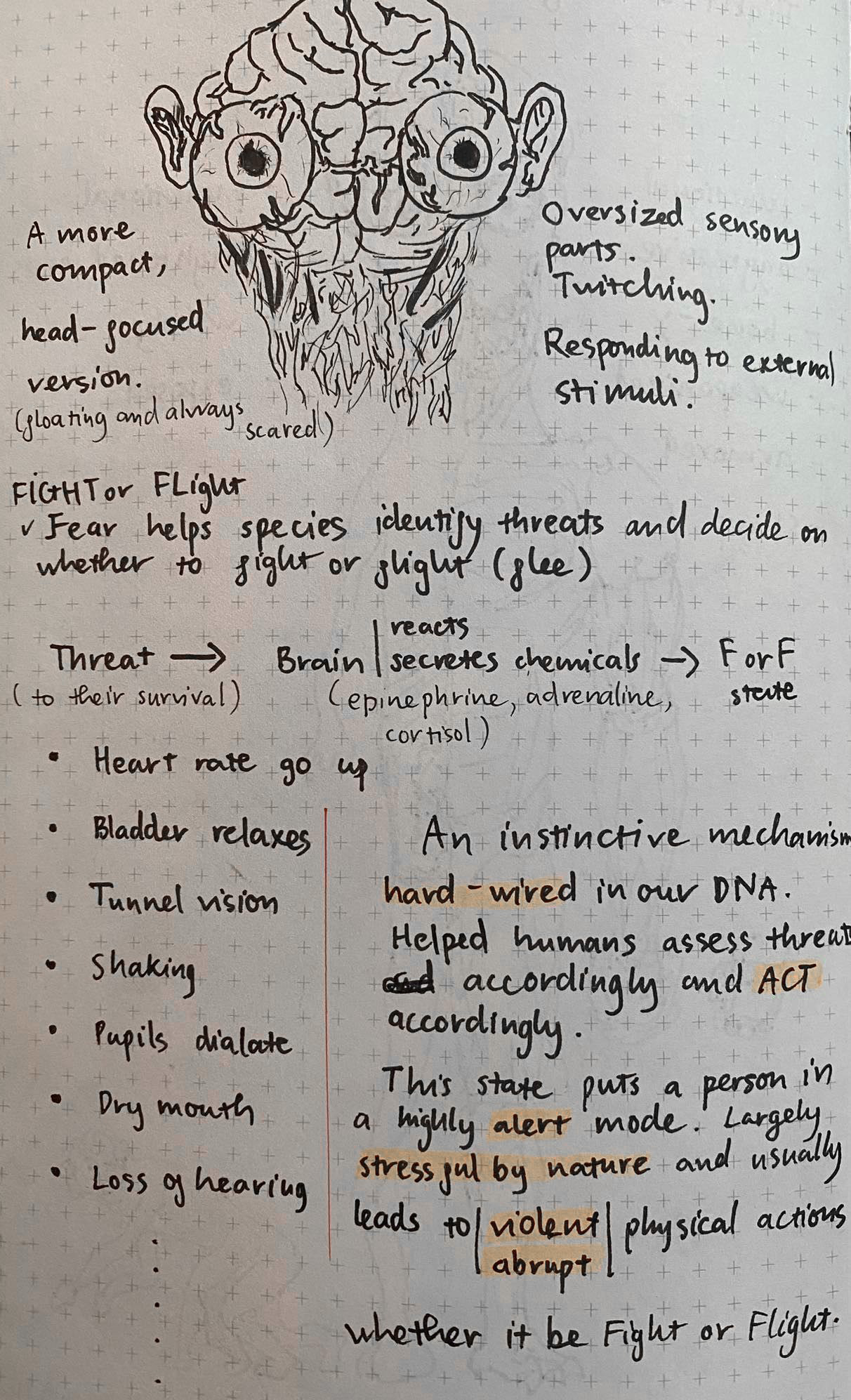


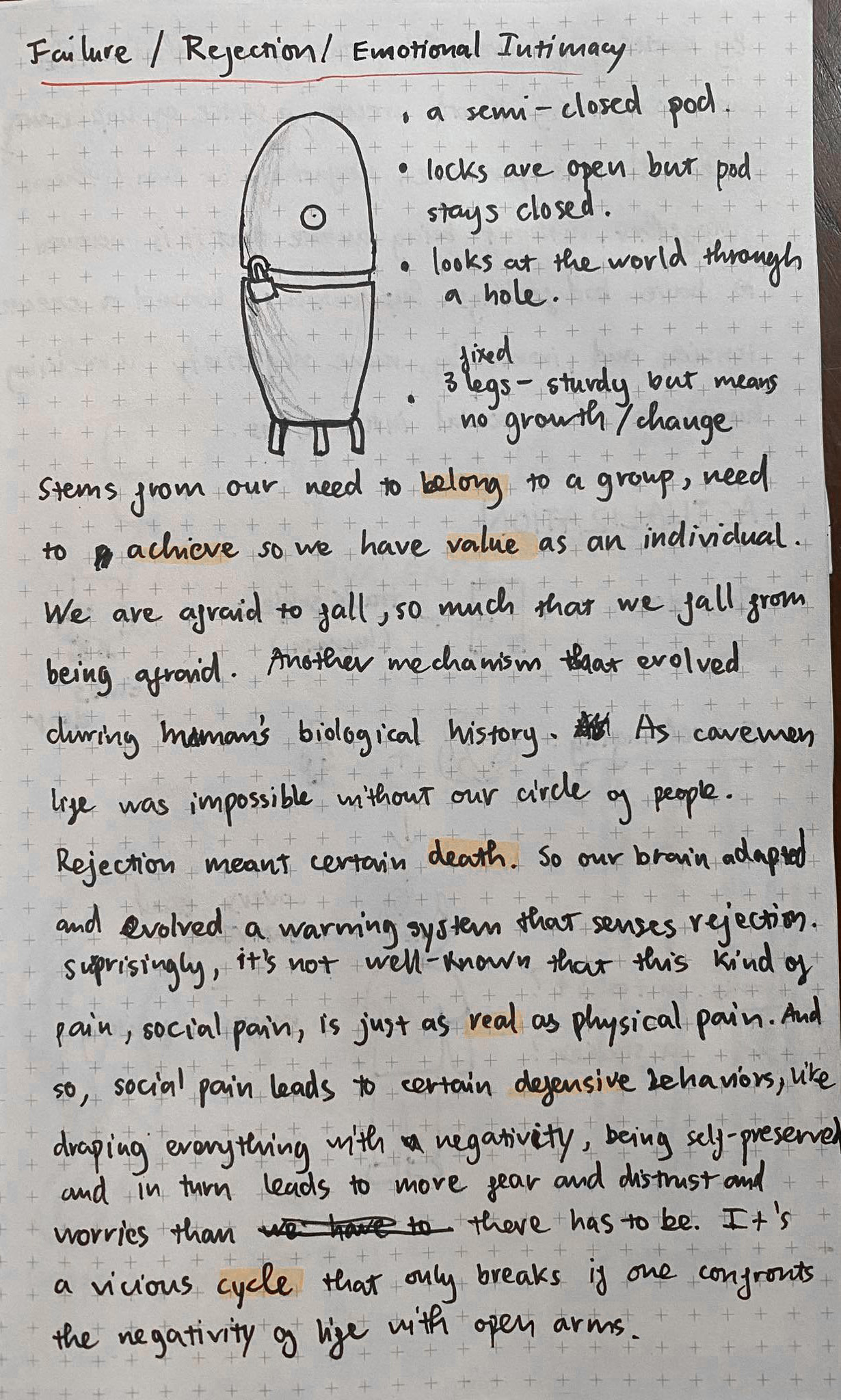
2D Drafts - done on paper



2D Drafts - to visualize IRL appearance for the AR

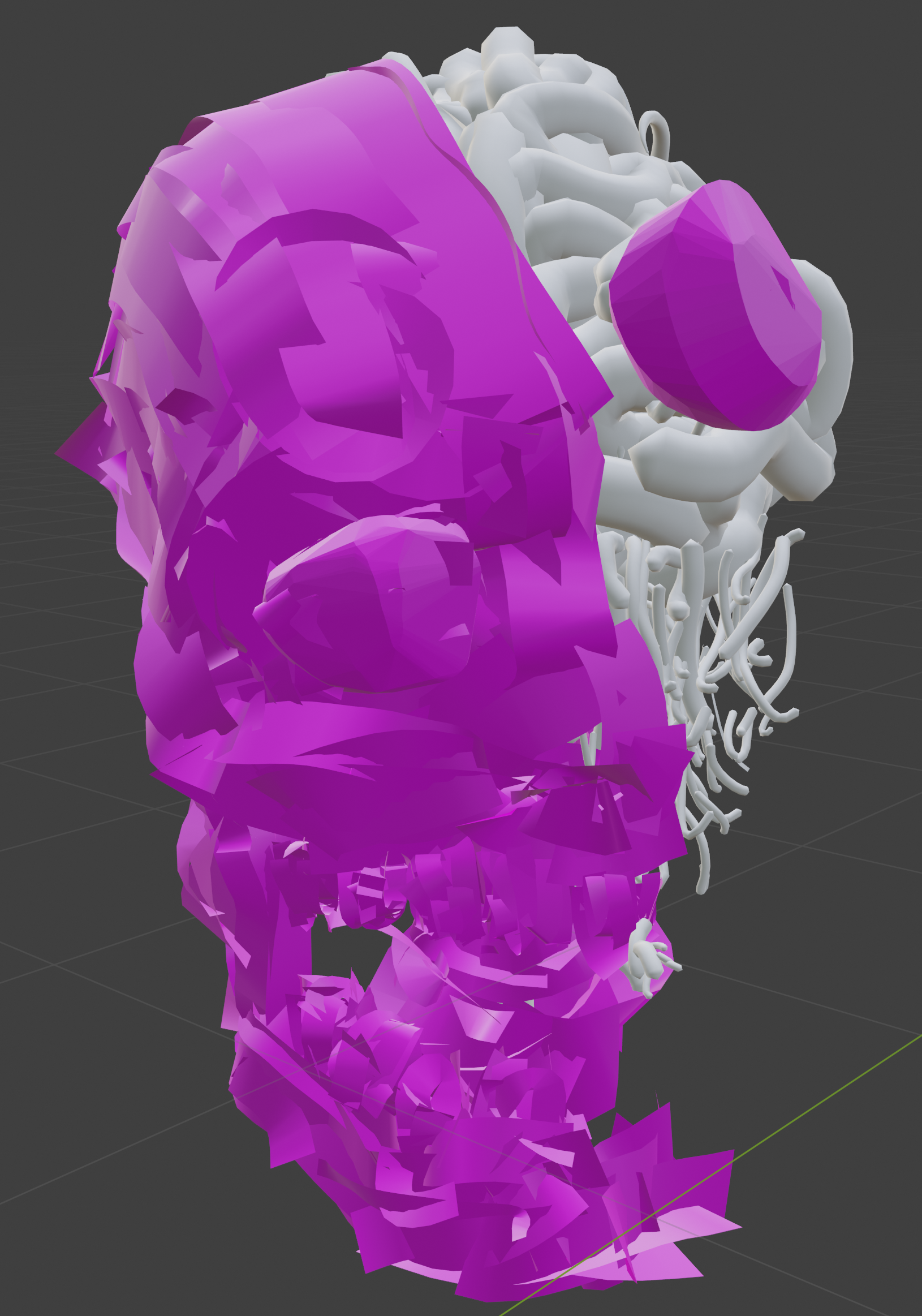

3D Sculptures - done in VR, using Tiltbrush
================================
Moving to VR, I witnessed massive changes of what could be done technically.
My idea evolved into something more ambitious. I found a way to combine intimacy and comprehensibility.
Biologically, we are no more advanced than humans thousands of years ago. Our wealth and technology boomed massively in just as recent as the last 500 years, and is exponentially out-growing our bodies in the race of evolution.
As much as we tell ourselves that we have transcended above animals as a species, we cannot reject our flesh-bound bio-mechanisms.
We are still using the same hardware as our Paleolithic ancestors, but in the 21st century-a richer and more diverse environment in every possible aspect, but not any easier on human beings.
This mismatch between our old brain and our new environment give birth to modern problems like loneliness, chronic stress or anxiety.
These problems affect different portions of society in different ways, yet some groups have it particularly harder than others,
case in point younger generations who are pursuing higher academic endeavors. As individuals they are not entirely independent nor dependent, but the nature of their work frequently put them under tremendous pressure.
A rough visualization I made beforehand of the iMac computer labs at RMIT was my basis of development. They are of significant meaning to me and many design students. Room 2.5.01 is the best example. No amount of words can fully capture the feelings we have towards it. It’s an open workplace, a social gathering location, a place of fond memories. A second home.
At night, the Lab is drastically different to the coziness during the day.
The A/C is off, so everywhere is a humid and suffocating silence.
Whoever stays the night, has their mind strained, stressed, faced with no choice but to keep working.
DNE detoured to be a sincere and poignant experience, a love-letter of sorts to the hardships of being a university student,
and studying Design in particular; of the concoction of primal fear AND modern fear.
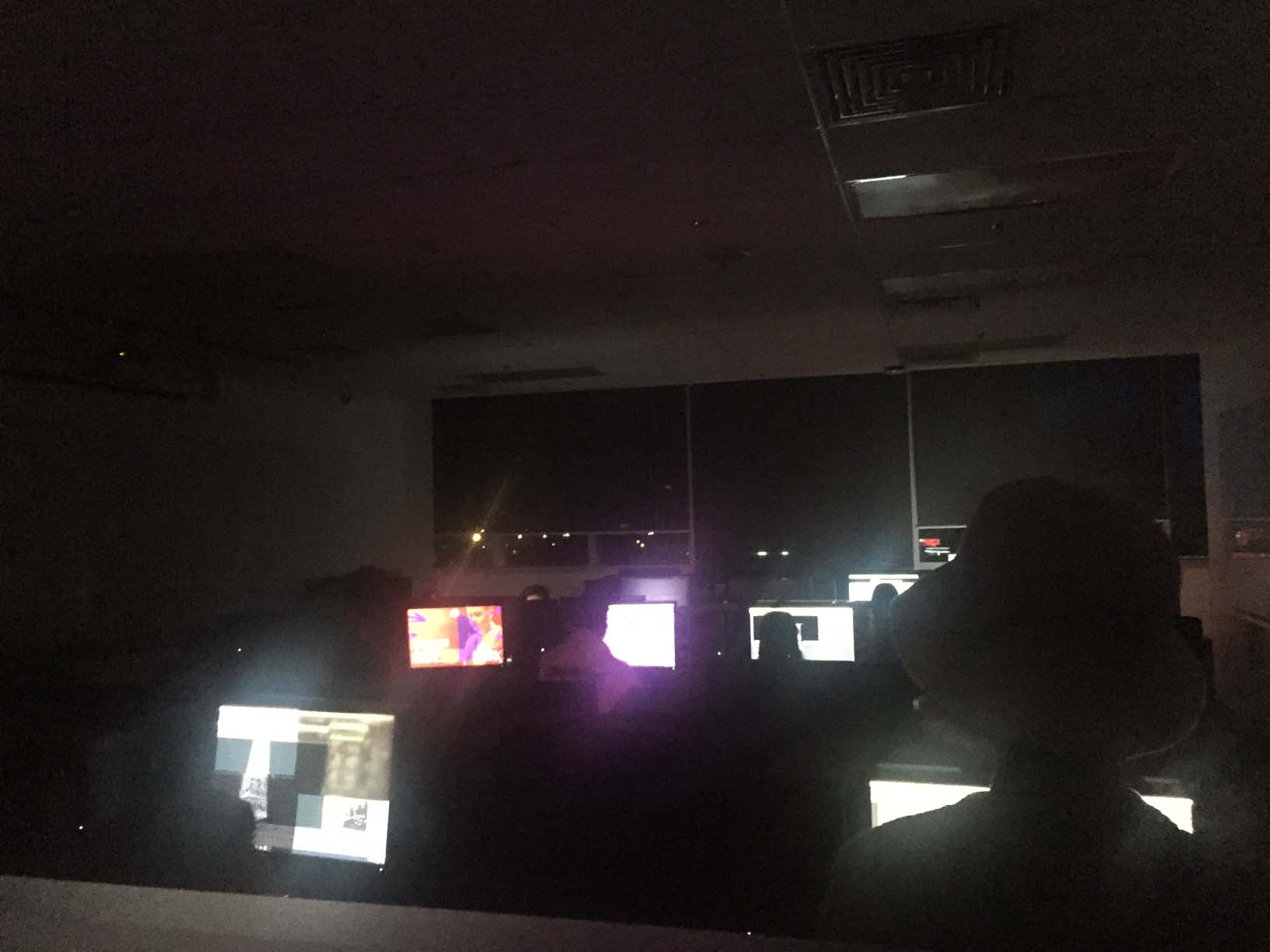


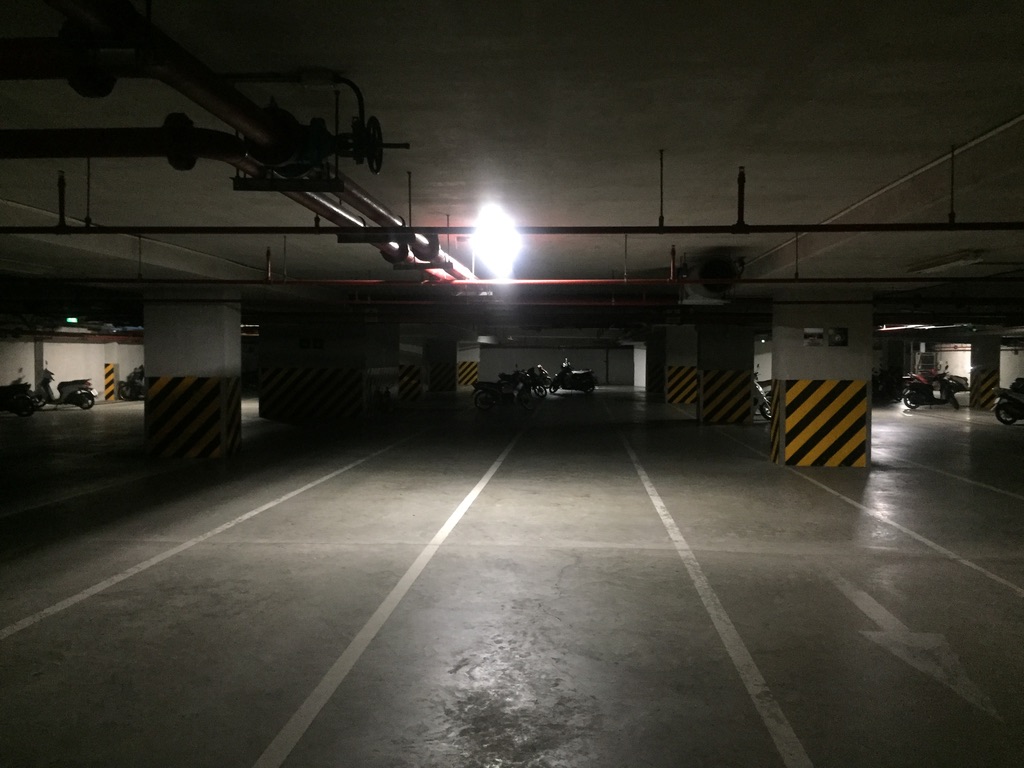
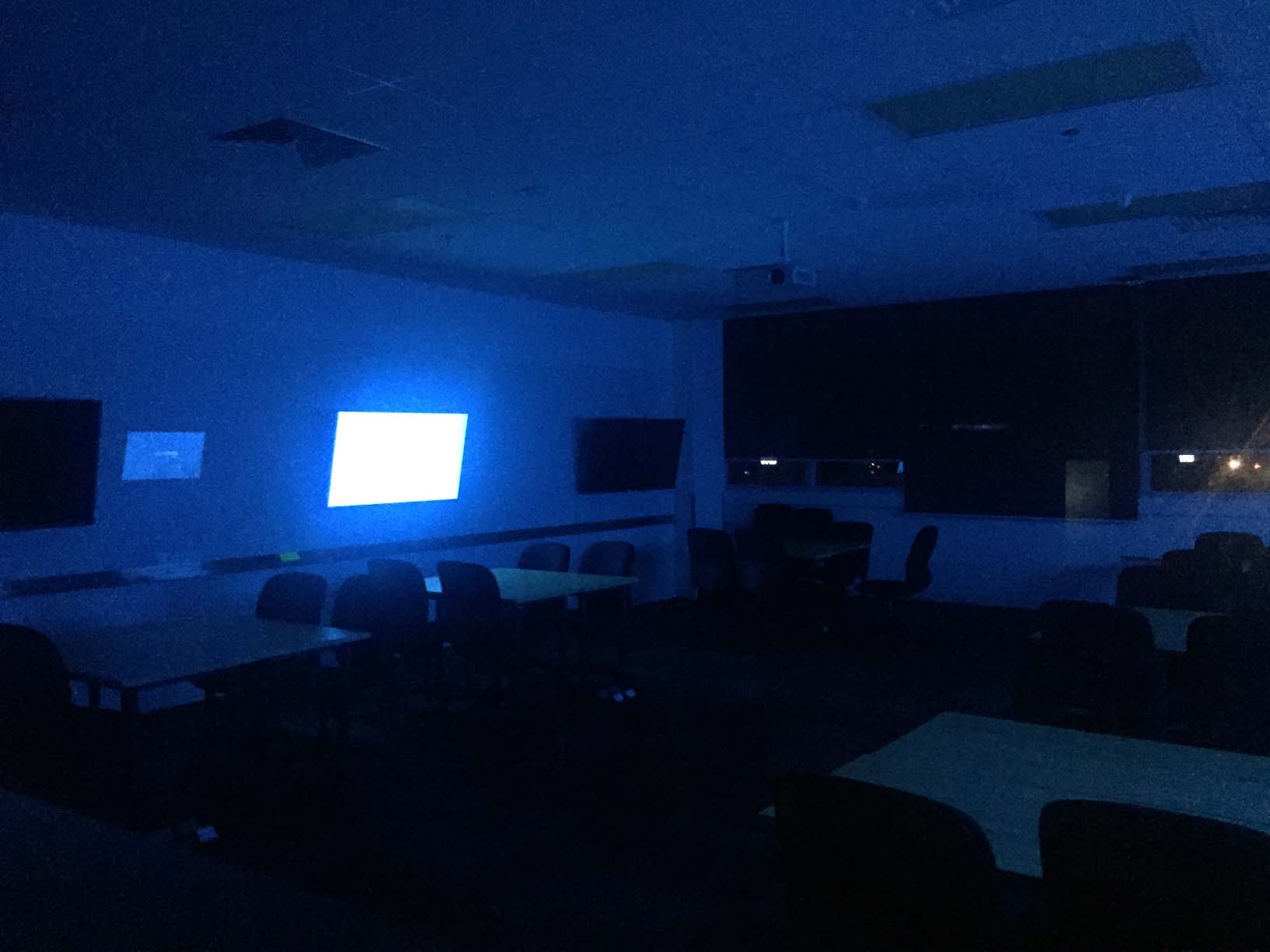
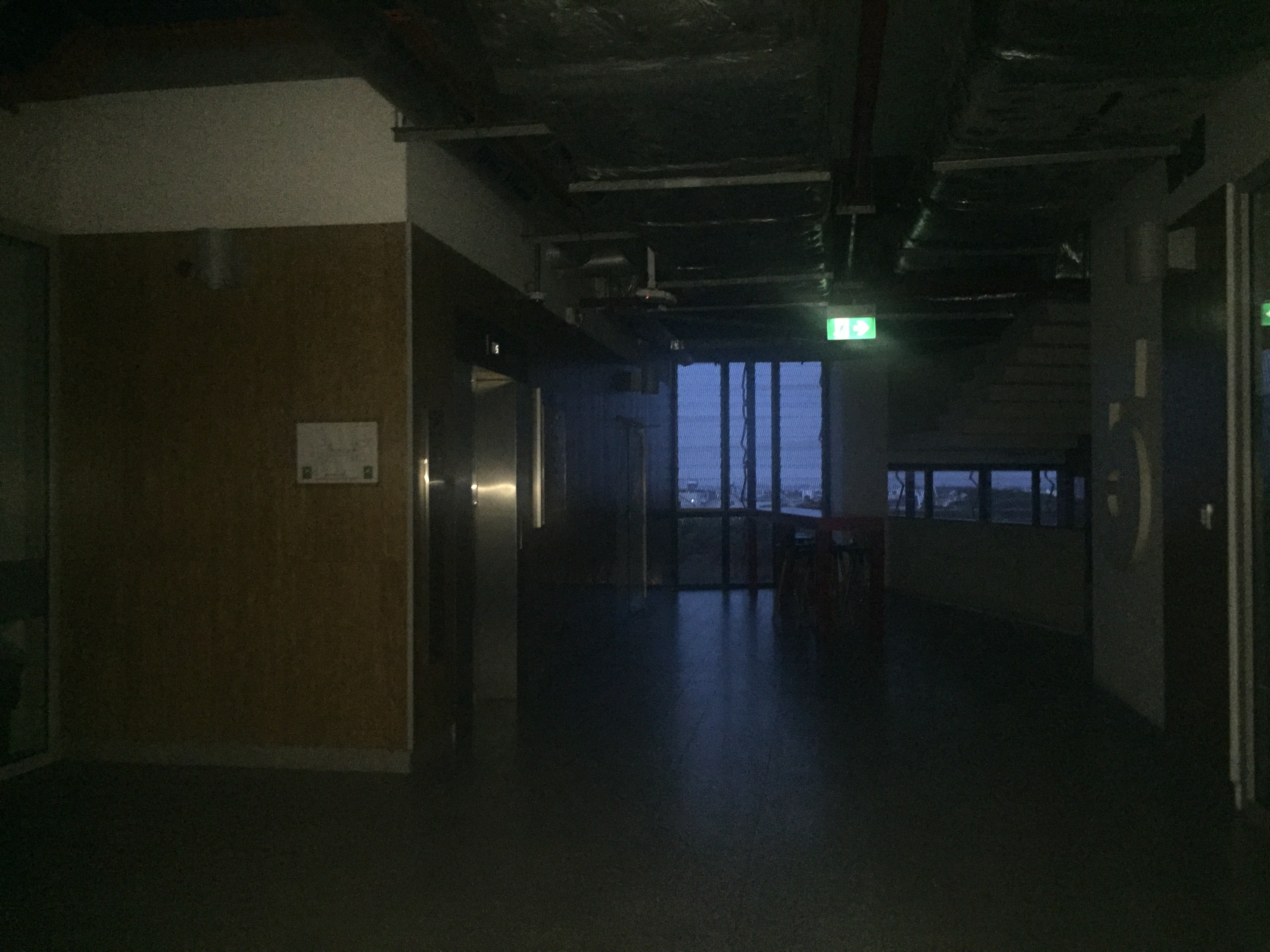
How the computer lab and campus looks like in the wee hours
This was when I knew Does Not Exist has found its essence.I gathered reference from a handful of video games with a similar vibe, too.
I needed to find predecessors that nailed its world-building and subliminial storytelling.


Famous “walking simulators”
Objectively speaking, DNE could be categorized as a ‘walking simulator’. Minimal mechanics, unique and stunning visuals, like a sightseeing excursion are what games like these are known for. What’s unique to them compared to other games is in the way they communicate their concepts with predominantly their atmosphere alongside immersion. Possessing no complex event systems or mechanics, they embrace a sense of openness, in terms of narrative.
The artistic world-building and the ability to go at one’s own pace is among the many ingredients that makes ‘walking simulators’ so enticing.


2D visualizations I made for the general atmosphere and mood(s)
Then I went and modeled the computer lab in its entirety, in Blender.
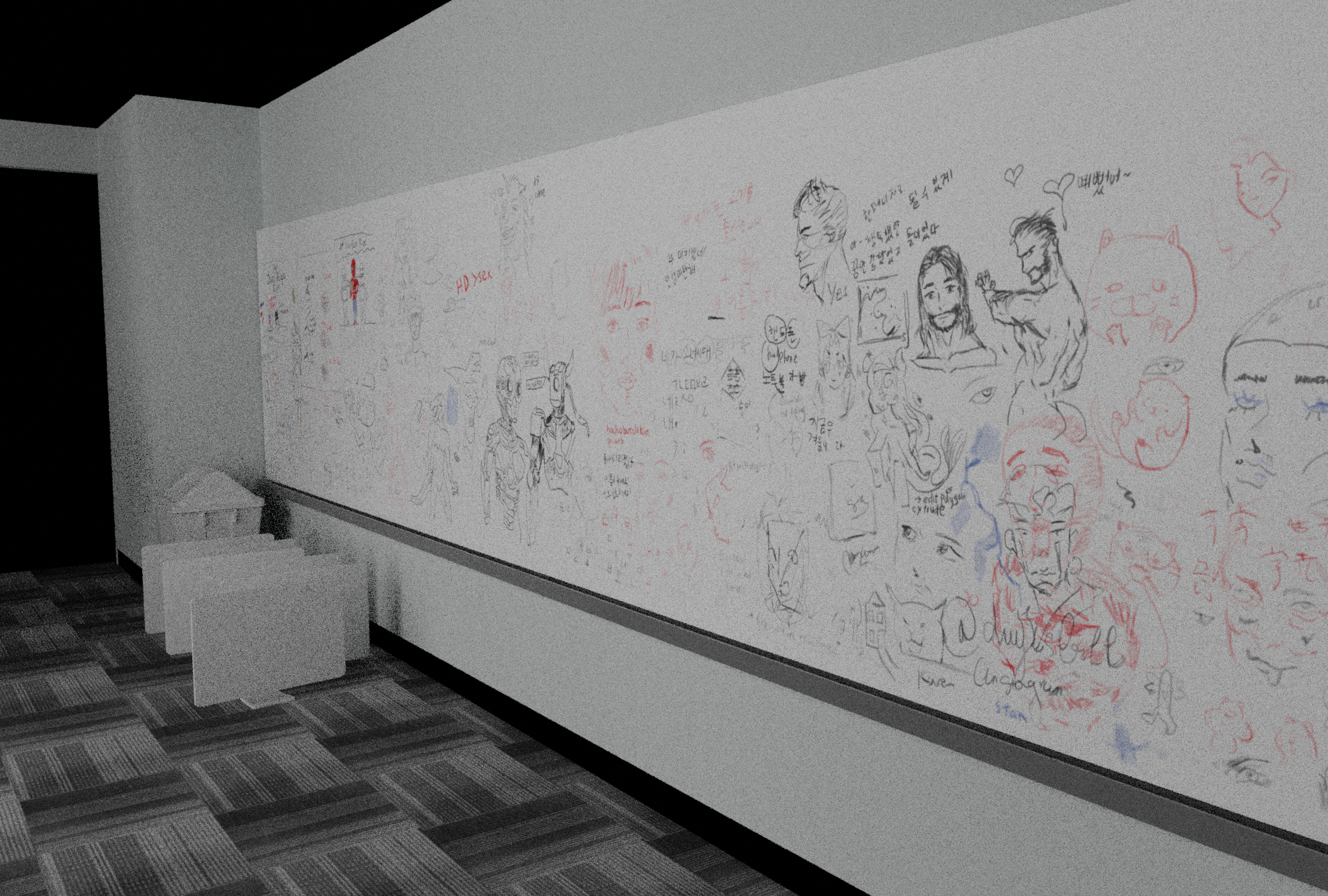



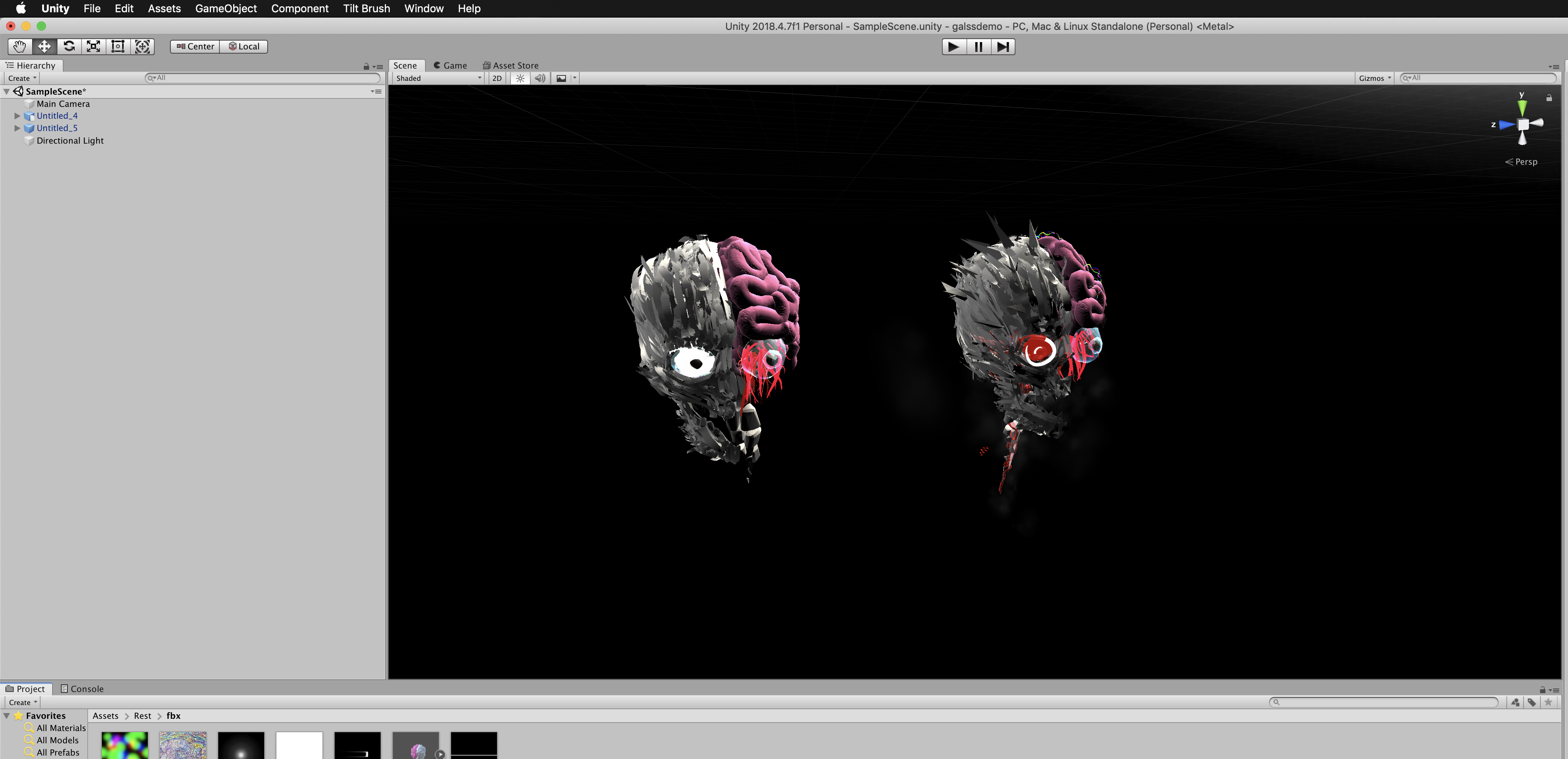
With the modeled computer room + the sculptures, I imported them into Unity - a game engine.
After arduous tinkering, I added minimal interactions like 2 pair of hands and grab-able objects with all the appropriate physics. Not everything that looked pretty in Blender successfully imported onto Unity. I had wild ideas for interaction, like trigger events that utilized the possibility of a game.
I almost made it so if I pressed a button a sea of cockroaches would flood the room, or monsters (the scupltures I made) would appear spookily.
With everything so far, I arrived at a playable prototype.
> next: Miliket Noodles Rebranding
> home
